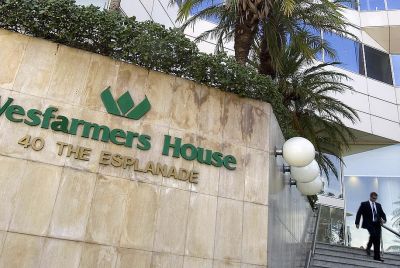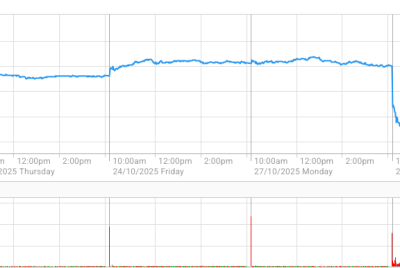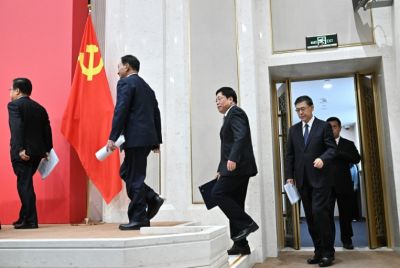Australian Market Suffers Biggest One-Day Loss Since April as Global Trade Fears Mount

The Australian share market endured a brutal session on Tuesday, wiping out $60 billion in value and marking its steepest decline since the devastating Liberation Day tariff announcements that shook global markets earlier this year.
The benchmark S&P/ASX 200 plummeted 167.30 points, or 1.94 percent, to close at 8,469.10, while the broader All Ordinaries index dropped 177.40 points, or 1.99 percent, to 8,738.30. The Australian dollar also weakened, falling to 64.83 US cents.
Market analysts described Tuesday's carnage as a "perfect storm" of converging international pressures that sent shockwaves through the local bourse. All eleven sectors finished in the red, with nowhere for investors to hide from the selloff.
Information technology stocks bore the brunt of the losses, surrendering almost six percent as a sector. Materials and banking stocks also suffered significant damage, falling three percent and 1.90 percent respectively.
Technology One experienced a dramatic collapse, plummeting 17.20 percent to $29.26, while WiseTech Global dropped 4.61 percent to $62.63 and Life360 fell 4.24 percent to $35.27.
The nation's big four banks were not spared from the bloodbath. Commonwealth Bank dropped 1.65 percent to $153.22, while Westpac slumped 2.97 percent to $37.87. NAB sagged 2.10 percent to $40.60, and ANZ slipped 0.91 percent to $35.85.
IG market analyst Tony Sycamore identified multiple catalysts behind the market's sharp retreat. "Investors braced for Nvidia's make-or-break earnings on Thursday morning AEDT and the all-important US September jobs report early Friday morning," he explained.
Adding to the anxiety, ongoing concerns about private-credit exposures have intensified the broader mood of risk reduction. Meanwhile, 20-year Japanese Government Bond yields surged six basis points to 2.80 percent ahead of the unveiling of a new stimulus package.
The Tuesday selloff represents the market's worst performance since April's Liberation Day tariff shock, when President Trump's sweeping trade measures triggered a 6.5 percent plunge in the ASX 200 during early trade. That decline marked the steepest one-day fall since the pandemic-induced crash of March 2020.
The Liberation Day tariffs unleashed a cascade of retaliatory measures that continue to reverberate through global markets. China imposed a punishing 34 percent tariff on all US imports, while Canada countered with a 25 percent levy on American-made vehicles. The European Union has signalled plans to unveil its own retaliation strategy, potentially targeting tech giants including Alphabet and Meta.
Since hitting a record high on February 14, the ASX 200 has tumbled 15.8 percent, erasing what was once a healthy 4.3 percent year-to-date gain. The index now trades at levels not seen since December 2023, sitting 12 percent lower for 2025.
VanEck senior portfolio manager Cameron McCormack warned that further pain could be ahead for Australian equities. He noted that large-cap stocks, including the major banks, currently carry benign forward earnings expectations combined with stretched valuations.
The VIX Index, which measures expected 30-day volatility for the S&P/ASX 200, previously spiked to 27 during the April tariff crisis. These elevated readings reflected levels reminiscent of June 2022, following the Reserve Bank of Australia's surprise 50-basis-point rate hike, and the pandemic panic of March 2020.
Financial analysts point to mounting recession risks as a key driver of market weakness. Investment banking giant JPMorgan published a stark report titled "There will be blood," warning that Trump's tariffs represent the largest US tax hike since 1968. The bank has raised its global recession probability to 60 percent, up from 40 percent previously.
Goldman Sachs has similarly elevated its 12-month recession forecast, lifting the odds from 20 percent to 35 percent. The revision reflects increasingly aggressive assumptions around reciprocal tariff policies and their potential impact on consumer spending and economic growth.
The tariff shock has been magnified by retaliation from trading partners, supply chain disruptions, and a broader sentiment collapse among investors and businesses. While some nations including Taiwan, Vietnam, and India have opted against immediate retaliatory measures in hopes of securing trade agreements, the overall trajectory points toward an escalating trade war.
Despite defensive sectors like consumer staples, telecommunications, and healthcare holding up relatively better during recent volatility, they still finished Tuesday's session firmly in negative territory. The breadth of selling across all market segments underscores the depth of investor anxiety about the economic outlook.
Market historians note that previous volatility spikes have often preceded extended periods of weakness. Since 2018, the ASX 200 has experienced ten significant VIX surges, and the market's forward performance following these events has been consistently underwhelming, with returns staying negative across most time frames.
While short-term oversold bounces remain possible as technical conditions become stretched, the broader macroeconomic risks continue to loom large. With no trade negotiations currently in sight and retaliation measures escalating, market strategists suggest the path of least resistance points downward.
Investors find themselves navigating a treacherous high-volatility environment where brutal selloffs and fleeting rallies coexist. The combination of trade uncertainty, inflation concerns, recession fears, and geopolitical tensions has created what analysts describe as mostly pain with little opportunity for traditional buy-and-hold strategies.
As global central banks maintain cautious stances amid these crosscurrents, Australian investors are bracing for continued turbulence. The market's ability to find support and stage a sustainable recovery will likely depend on de-escalation in trade tensions and improved clarity around the global economic trajectory.
© Copyright 2025 IBTimes AU. All rights reserved.





















